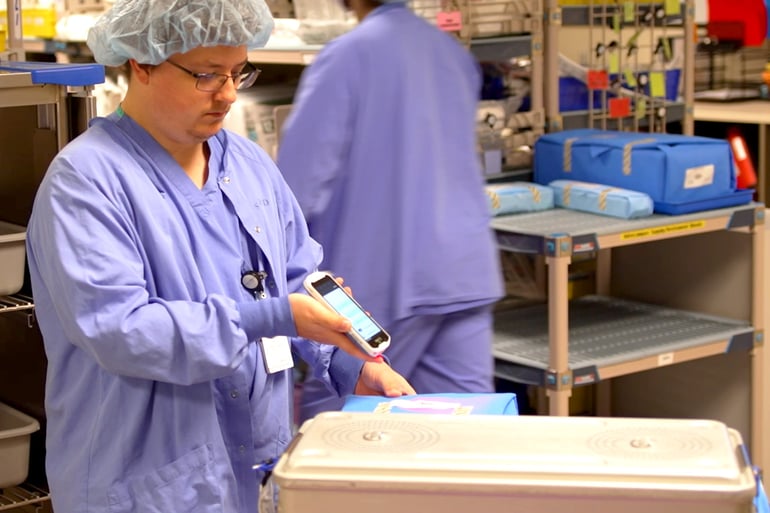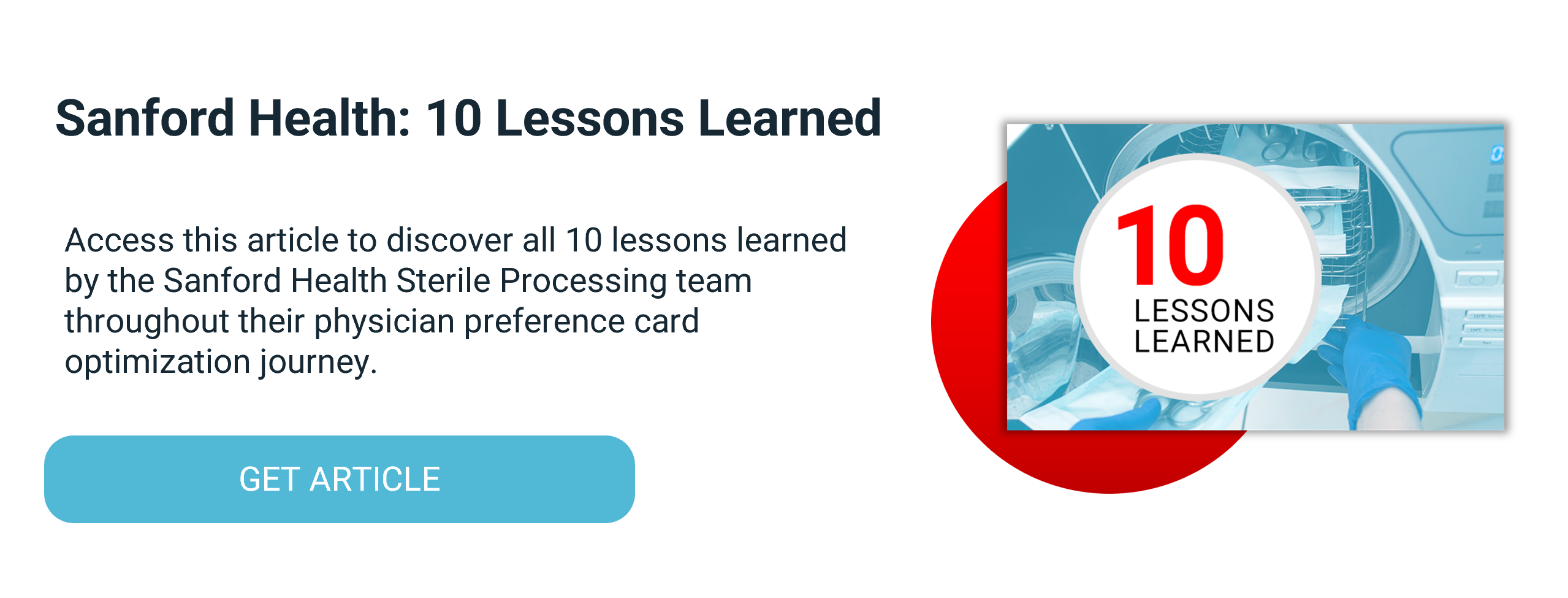Optimizing Physician Preference Cards: The Sanford Health Success Story

The Sanford Health Sterile Processing team achieved great success in their endeavor to optimize physician preference cards. But this journey did not come without trial and error. Many of those challenges resulted in learnings that they can now share with others.
Here are three of Sanford Health’s lessons learned on their way to achieving 90%+ physician preference card accuracy.
Recent research findings reveal how other healthcare organizations are embracing similar best practices to drive forward healthcare supply chain improvements in many areas.
1. Lead with Data
The Sanford Health Sterile Processing team had attempted multiple improvement projects on physician preference cards at the beginning of their transformation journey but acknowledged that their failure was a result of not having the systems and data to support them.
They knew products were being wasted because they saw it themselves day in and day out when picking cases based on outdated physician preference cards. But with disjointed systems and manual processes, they didn’t have the data to prove it to the Perioperative team.
It was not until Sanford Health implemented the Tecsys Elite™ Healthcare Point of Use (POU) solution that they had the proof — preference card utilization data revealed that about 45% of items they picked based on physician preference cards and sent to the OR came back to them unused.
Access to analytics for data-driven supply chain decisions is a key priority among healthcare leaders in 2023. Among healthcare CIOs surveyed by Gartner, nearly half (49%) said their technology investments this year will go toward business intelligence/data analytics.
2. Engage a Champion
Because physician preference cards impact workflows across Perioperative services, including surgical services and sterile processing, optimization required collaboration between the two. The Sterile Processing team was leading the card optimization initiative at Sanford Health, so they needed a champion on the clinical side to help garner support and drive the initiative forward with surgical services.
They found one in the Orthopedic Surgical Services’ (OSS) Operating Room (OR) Director who was “empathetic with her team” about the proposed changes, but at the same time convinced them to “put in the effort and see if it worked,” according to Sanford Health Director of Sterile Processing Susan Pfeifer. She added, “I give a lot of credit to her passion and commitment in this space. I don’t know if we would’ve been able to move forward if she hadn’t owned the OR piece and recognized it is work worth doing.”
In today’s value-based care and payment environment, clinician engagement is a must-have for any supply chain transformation initiative. In a recent McKinsey survey, clinical engagement, goal setting, and data and analytics were cited among U.S. health system and supply chain executives as factors critical to a high-performing supply chain function.
3. Tie It Back to the Patient
A main driver for physician preference card inaccuracy at Sanford Health was poor POU scanning compliance. The OR team was failing to scan items at the POU, so their status went undocumented — the Sterile Processing department (SPD) and Supply Chain had no way of knowing if items not returned to the SPD were wasted, lost or hoarded.
To drive home the importance of POU scanning compliance, the Sanford Health Sterile Processing team needed to tie it back to the OR team’s top priority — their patients. They helped the OR understand how their choices impact documentation in the electronic health record (EHR) and why failure to scan has safety ramifications.
They pointed out how POU scanning affects the accuracy of the medical record. When the OR scans all the items used in delivering care, that product information is populated in the patient’s record. In the event of a recall, the healthcare organization has definitive data on whether or not the recalled item was used in a case.
Recent research from Deloitte showed how “comprehensive solutions that position technology as a component alongside people and processes can help make healthcare supply chains more resilient.” Like Sanford Health, other healthcare organizations are addressing supply chain challenges not with technology alone but rather in conjunction with efforts to foster “an organization-wide commitment from leaders to staff members.”
Start Your Journey
Sanford Health’s work on physician preference card optimization has set a new standard for healthcare. These are only a few of the lessons learned by the Sanford Health Sterile Processing team but we encourage you to use these best practices as a foundation for you to build upon your own process improvement journeys.

